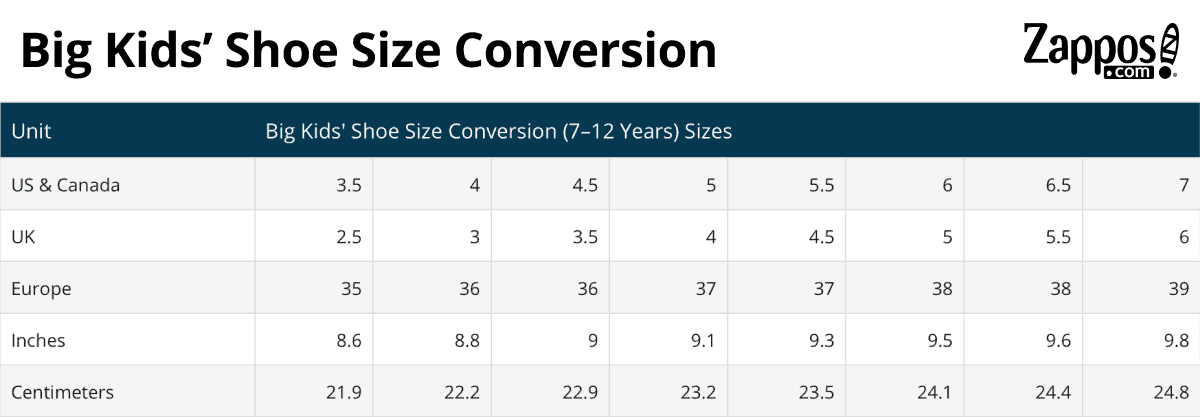The Ultimate Guide to Children’s Shoe Size Conversion for Parents
Hey there, awesome parents! Are you juggling between shoe sizes and wondering how to convert your kid’s shoe size to different international sizes? Fret not, because you’ve landed on the right page! This Ultimate Guide to Children’s Shoe Size Conversion is your go-to resource for making sense of all those numbers and letters, ensuring your little one has the comfiest and most supportive footwear as they embark on their everyday adventures.
Shopping for children’s shoes can sometimes feel like you’re trying to solve a riddle, with various sizing standards such as US, UK, EU, and centimeters. But hey, that’s why we’re here – to turn that puzzlement into your superpower for selecting the best-fitting shoes for your kid!
Why Is Proper Shoe Size Important for Children?
Before we dive into the nitty-gritty of size conversion, let’s talk about why it’s so important to get your child’s shoe size just right. Properly fitting shoes are crucial for your child’s comfort and foot development. Ill-fitting shoes can lead to all sorts of problems, from blisters and ingrown toenails to more serious orthopedic issues. Learn how to measure your child’s feet accurately and say goodbye to guessing games!
How to Measure Your Child’s Feet
To start, you’ll need a piece of paper, a pencil, and a ruler or measuring tape. Place the paper on the ground against a wall. Have your child stand on it with their heel lightly touching the wall, and mark the spot where the longest toe ends. Measure the distance from the edge of the paper to the mark to find the foot length. Remember to measure both feet, as they could be slightly different sizes – always go with the size of the larger foot.
It’s best to measure your child’s feet at the end of the day when they are largest, and make sure they are standing for the most accurate measurement. Also, check their foot size every few months because those little feet grow fast!
Understanding Children’s Shoe Sizing Systems
Now, let’s unpack the different shoe sizing systems you might come across:
- US and Canada: Both countries use basically the same sizing system for children’s shoes.
- UK: The UK sizing is similar to US sizing but there are some differences to be aware of.
- EU: Most European countries use the Continental European system. Unlike the US/UK sizes, EU sizes are the same for both children and adults, starting from the smallest size.
- Centimeters: Japan uses centimeters, so you will need to convert from centimeters to your home country’s size if purchasing Japanese imports.
Loading your brains with this knowledge will make online shopping or buying shoes while traveling a breeze.
Curious about how these sizes translate to one another? That’s where a handy conversion chart enters the scene!
Using Shoe Size Conversion Charts Wisely
While we will soon provide an extensive shoe size conversion chart, here’s a tip: always cross-reference the chart with the specific brand’s size guide when available. Manufacturers sometimes have slight variations in sizing, and it’s always best to check directly to get the most accurate fit.
Look out for our upcoming comprehensive shoe size chart, and you will be all set to stride into the world of children’s footwear with confidence!
And with that, we’ve laid the foundation for mastering children’s shoe size conversion. In the next sections, we will provide detailed charts, tips for online shoe shopping, and insights on selecting the best shoe types for different age groups and activities. Get ready to become a shoe sizing wizard and ensure those tiny toes stay happy and healthy!

5 Things Parents Should Know in Preparing for Shoe Size Conversion
Navigating the world of children’s shoe sizing can be smoother with a few essential tips in your back pocket:
- Continually Monitor Your Child’s Foot Growth: Children’s feet grow astonishingly fast, and staying abreast of their current foot size is key to effective shoe size conversion. This means checking and measuring their feet regularly—every two to three months for toddlers and every four to six months for older children.
- Understand the Brand-Specific Size Differences: It might surprise you to learn that not all shoe brands follow the same sizing guidelines, even within the same country’s sizing system. Having your child’s measurement in inches or centimeters can help you navigate these variations more fluidly.
- Be Aware of Half Sizes and Widths: Just like adult shoes, children’s shoes often come in half sizes and varying widths. When converting between sizing systems, it’s crucial to consider whether the brand offers these options, as they can make a significant difference in fit, especially if your child has a wide or narrow foot.
- Seasonal Considerations Matter: Are you buying boots for the winter or sandals for the beach? Always factor in whether you’ll need extra space for thick socks or if your child’s feet might swell slightly in the heat when considering sizes. It may be appropriate to go up half a size in certain situations.
- Online Resources and Tools: To make size conversions a breeze, make use of online tools and apps where you input your child’s foot measurements to receive a size recommendation. These tools can consider various international sizing standards and give you a starting point when shopping across different brands and countries.
Understanding these key points will prepare you for any shoe-shopping scenario and ensure that you always have the right fit for your child’s growing feet.
Deep Dive into International Children’s Shoe Sizes
Let’s look at the specifics of shoe sizes across different regions:
| Foot length (cm) | US/Canada Size | UK Size | EU Size | Japan Size (cm) |
|---|
Note: When using this table, it’s vital to remember that this gives you a general guideline, and it’s recommended to check the size charts of the specific brands you’re interested in for exact measurements.
Tips for Online Shoe Shopping for Your Child
- Read Reviews: Other shoppers’ experiences can be invaluable. Look out for comments on whether the shoe sizes run big, small, or true to size.
- Understand the Return Policy: It’s helpful to shop with retailers that have flexible return policies, in case the shoe doesn’t fit your child perfectly.
- Consult Size Guides: Use brand-specific size guides every time, as they often provide the most accurate information for their footwear.
- Measure in Millimeters: For precision, measure your child’s foot in millimeters. This can easily be converted to centimeters for brands that use the metric system and provides more accuracy than inches.
- Interactive Tools: Some online stores offer interactive tools where you can input measurements or even print out sizing templates to compare your child’s foot size directly.
By keeping these tips in mind, you’ll be an expert at navigating online shoe shopping, making it a fun and successful experience for both you and your child.
Choosing the Right Shoes for Different Ages and Activities
The right shoe supports your child’s foot development and adapts to their active lifestyle. From the flexible soles needed for toddlers who are just learning to walk, to the sturdier shoes that provide support for school-aged children, each stage of childhood requires shoes designed for different needs. Likewise, your sporty child may need specialized athletic shoes, while all children can benefit from waterproof options for those rainy day adventures.
We will continue to provide comprehensive sizing charts and insights with the aim to make understanding children’s shoe sizes simple and stress-free. Now go ahead, equipped with these guidelines, and choose the perfect pair that ensures your child steps out in both style and comfort!
For more great articles please see here. For more information see here
Disclaimer
The articles available via our website provide general information only and we strongly urge readers to exercise caution and conduct their own thorough research and fact-checking. The information presented should not be taken as absolute truth, and, to the maximum extent permitted by law, we will not be held liable for any inaccuracies or errors in the content. It is essential for individuals to independently verify and validate the information before making any decisions or taking any actions based on the articles.




